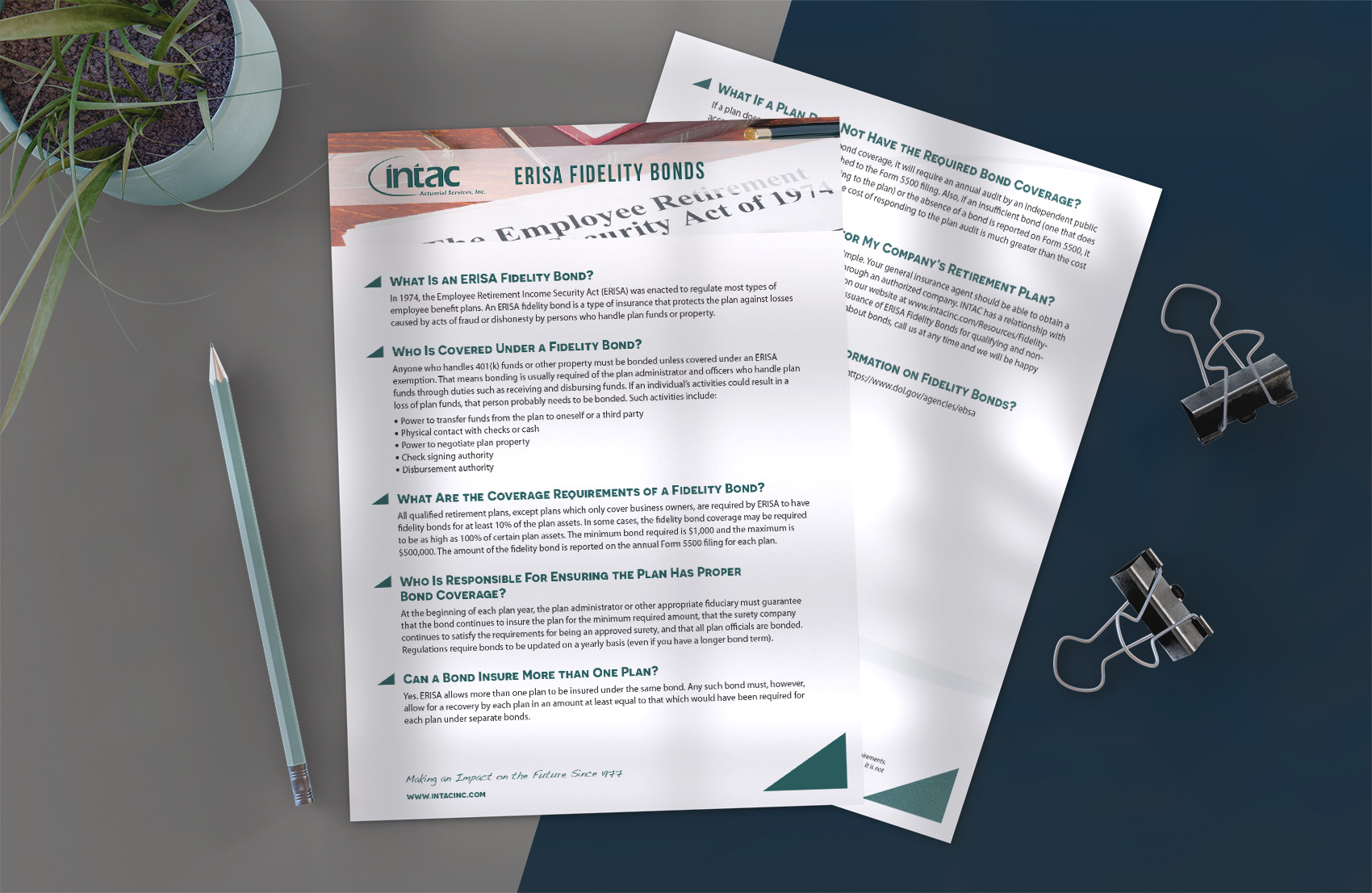What Is an ERISA Fıdelıty Bond?
In 1974, the Employee Retirement Income Security Act (ERISA) was enacted to regulate most types of employee benefit plans. An ERISA fidelity bond is a type of insurance that protects the plan against losses caused by acts of fraud or dishonesty by persons who handle plan funds or property.
Who Is Covered Under a Fıdelıty Bond?
Anyone who handles 401(k) funds or other property must be bonded unless covered under an ERISA exemption. That means bonding is usually required of the plan administrator and officers who handle plan funds through duties such as receiving and disbursing funds. If an individual’s activities could result in a loss of plan funds, that person probably needs to be bonded. Such activities include:
-
Power to transfer funds from the plan to oneself or a third party
-
Physical contact with checks or cash
-
Power to negotiate plan property
-
Check signing authority
-
Disbursement authority
What Are the Coverage Requırements of a Fıdelıty Bond?
All qualified retirement plans, except plans which only cover business owners, are required by ERISA to have fidelity bonds for at least 10% of the plan assets. In some cases, the fidelity bond coverage may be required to be as high as 100% of certain plan assets. The minimum bond required is $1,000 and the maximum is
$500,000. The amount of the fidelity bond is reported on the annual Form 5500 filing for each plan.
Who Is Responsıble For Ensurıng the Plan Has Proper Bond Coverage?
At the beginning of each plan year, the plan administrator or other appropriate fiduciary must guarantee that the bond continues to insure the plan for the minimum required amount, that the surety company continues to satisfy the requirements for being an approved surety, and that all plan officials are bonded. Regulations require bonds to be updated on a yearly basis (even if you have a longer bond term).
Can a Bond Insure More than One Plan?
Yes. ERISA allows more than one plan to be insured under the same bond. Any such bond must, however, allow for a recovery by each plan in an amount at least equal to that which would have been required for each plan under separate bonds.
What If a Plan Does Not Have the Requıred Bond Coverage?
If a plan does not have the proper bond coverage, it will require an annual audit by an independent public accountant. This audit must be attached to the Form 5500 filing. Also, if an insufficient bond (one that does not meet ERISA requirements pertaining to the plan) or the absence of a bond is reported on Form 5500, it could trigger a DOL audit. Generally, the cost of responding to the plan audit is much greater than the cost of the fidelity bond premium.
How Do I Acquıre a Bond for My Company’s Retırement Plan?
Applying for an ERISA fidelity bond is quite simple. Your general insurance agent should be able to obtain a bond. It is important to purchase your bond through an authorized company. INTAC has a relationship with Colonial Surety Company, which can be found on our website at www.intacinc.com/Resources/Fidelity-Bonds. Colonial Surety offers immediate online issuance of ERISA Fidelity Bonds for qualifying and non-qualifying assets. If you would like to know more about bonds, call us at any time and we will be happy to assist you.
Where Can I Fınd Addıtıonal Informatıon on Fıdelıty Bonds?
Visit the Department of Labor’s website to learn more: https://www.dol.gov/agencies/ebsa

